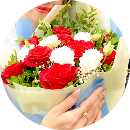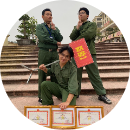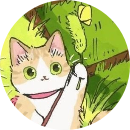in the village hani families build their own closed house compound protected by thick

Những câu hỏi liên quan
In the village, Hani families build their own closed house compound protected by thick muddy walls. There are about six people of two or three generations living in a house.Normally, two small bedrooms are on either side of the common room. The bedroom of the head of the house is on the left side of the great room, while the room for a son and his future wife is on the right. Father-in-law and older brothers-in-law are not allowed to enter the couples room.Traditionally, when the parents die, th...
Đọc tiếp
In the village, Hani families build their own closed house compound protected by thick muddy walls. There are about six people of two or three generations living in a house.
Normally, two small bedrooms are on either side of the common room. The bedroom of the head of the house is on the left side of the great room, while the room for a son and his future wife is on the right. Father-in-law and older brothers-in-law are not allowed to enter the couple's room.
Traditionally, when the parents die, the bed in the daughter-in-law's room is removed to make room for the coffin. The couple sleep on the floor of the common room with other family members. After the funeral, the couple return to their bedroom, or move to the parents' bedroom if they are the oldest son and daughter-in-law. Their widowed mother or father will sleep in the common room.
1.What are on either side of the common room? 2.Whose bedroom is on the left side of the great room? 3.Who is not allowed to enter the couple's room?
4.When do the couple return to their bedroom, or move to the parents' bedroom if they are the oldest son and daughter-in-law?
5. Where will their widowed mother or father sleep?
In the village, Hani families build their own closed house compound protected by thick muddy walls. There are about six people of two or three generations living in a house.
Normally, two small bedrooms are on either side of the common room. The bedroom of the head of the house is on the left side of the great room, while the room for a son and his future wife is on the right. Father-in-law and older brothers-in-law are not allowed to enter the couple's room.
Traditionally, when the parents die, the bed in the daughter-in-law's room is removed to make room for the coffin. The couple sleep on the floor of the common room with other family members. After the funeral, the couple return to their bedroom, or move to the parents' bedroom if they are the oldest son and daughter-in-law. Their widowed mother or father will sleep in the common room.
1.What are on either side of the common room?
Two small bedrooms are on either side of the common room.
2.Whose bedroom is on the left side of the great room?
The bedroom of the head of the house is on the left side of the great room.
3.Who is not allowed to enter the couple's room?
Father-in-law and older brothers-in-law are not allowed to enter the couple's room.
4.When do the couple return to their bedroom, or move to the parents' bedroom if they are the oldest son and daughter-in-law?
After the funeral of the parents.
5. Where will their widowed mother or father sleep?
They will sleep in the common room.
Đúng 1
Bình luận (2)
1.
Why did the postman have to walk from village to village?
2.
Why were most villagers illiterate?
3.
Why did the people in Baffin Island use ice blocks to build their houses?
4.
Why did each house have only one room?
Giúp em gấp ạ
1. It was difficult to reach the villagers on the mountain
2.There was no school in the villages
3.There were no other materials available in that deserted land
4.It was impossible to build a big house with several rooms in the ice and snow.
Đúng 1
Bình luận (0)
Relationships in Vietnamese family are more complicated than those of Western countries. The majority of families in Vietnam are extended families as many generations co-live to take care of each other. Family in Vietnam looks similar to a system of mini society with the most elderly having the strongest voice and taking charge of most activities in house. Each family has its own rules and values that members are supposed to conform with. The younger generation shows respect for the older genera...
Đọc tiếp
Relationships in Vietnamese family are more complicated than those of Western countries. The majority of families in Vietnam are extended families as many generations co-live to take care of each other. Family in Vietnam looks similar to a system of mini society with the most elderly having the strongest voice and taking charge of most activities in house. Each family has its own rules and values that members are supposed to conform with. The younger generation shows respect for the older generation and vice versa, the old generation tolerates the young. In the relationships between parents and children, and between husband and wife as well, traditional Vietnamese retain much of their long established customs and values. Traditional Vietnamese meal - dining on the floor with the whole extended family Although influenced by Chinese culture and Confucianism, in the eyes of children, Vietnamese mothers still have the same status as their counterparts. They are the embodiments of love, of self-denial and of sacrifice. For Vietnamese parents, their children are their most valuable assets; therefore, within their financial capacity, most of them are eager to have as many children as they can.
1 Why are families in Vietnam extended families?
2 What happens between generations inVietnamese families?
3 How was a woman demanded before?
4 By what were Vietnamese woman affected?
5 Why now can we say "Men make houses and women make home"?
Relationships in Vietnamese family are more complicated than those of Western countries. The majority of families in Vietnam are extended families as many generations co-live to take care of each other. Family in Vietnam looks similar to a system of mini society with the most elderly having the strongest voice and taking charge of most activities in house. Each family has its own rules and values that members are supposed to conform with. The younger generation shows respect for the older generation and vice versa, the old generation tolerates the young. In the relationships between parents and children, and between husband and wife as well, traditional Vietnamese retain much of their long established customs and values. Traditional Vietnamese meal - dining on the floor with the whole extended family Although influenced by Chinese culture and Confucianism, in the eyes of children, Vietnamese mothers still have the same status as their counterparts. They are the embodiments of love, of self-denial and of sacrifice. For Vietnamese parents, their children are their most valuable assets; therefore, within their financial capacity, most of them are eager to have as many children as they can.
1 Why are families in Vietnam extended families?
Because many generations co-live to take care of each other
2 What happens between generations inVietnamese families?
the most elderly having the strongest voice and taking charge of most activities in house
3 How was a woman demanded before?
They are the embodiments of love, of self-denial and of sacrifice
4 By what were Vietnamese woman affected?
Chinese culture and Confucianism
5 Why now can we say "Men make houses and women make home"?
Đúng 0
Bình luận (0)
1 Why are families in Vietnam extended families?
=> Because many generations co-live to take care of each other.
2 What happens between generations in Vietnamese families?
=> The younger generation shows respect for the older generation and vice versa, the old generation tolerates the young.
4 By what were Vietnamese woman affected?
=> Chinese culture and Confucianism.
Đúng 0
Bình luận (0)
Listen and tick (V) the activities that minority children do to help their families. 1. look after the house 2. weave clothing 3. prepare food 4. build houses 5. grow crops 6. raise livestock
Đọc tiếp
Listen and tick (V) the activities that minority children do to help their families.
1. look after the house 
2. weave clothing 
3. prepare food 
4. build houses 
5. grow crops 
6. raise livestock 
1. look after the house (trông nhà) | v |
2. weave clothing (dệt vải) | v |
3. prepare food (chuẩn bị đồ ăn) | v |
4. build houses (xây nhà) |
|
5. grow crops (trồng nông sản) | v |
6. raise livestock (chăn nuôi gia súc) | v |
Đúng 0
Bình luận (0)
Bài nghe:
Ethnic minority children might live the life different from that of most Kinh children. They spend some of their time helping their parents inside and outside the house. They learn to work from an early age, usually at six. Girls help look after the house, care for smaller children, weave clothing, and prepare food. Boys learn to do what their fathers do. They grow crops, raise the family's livestock, and catch fish.
In the evening, the family often gathers round the open fire. Children listen to stories or legends of heroes from their grandparents. They also listen to adults talk about their work. This is how the elders pass on traditions and knowledge to their children.
Nowadays, more and more minority children are going to school. There, they meet children from other ethnic groups. They play new games and learn new things.
Tạm dịch:
Trẻ em dân tộc thiểu số có thể sống cuộc sống khác với hầu hết trẻ em người Kinh. Họ dành thời gian của họ để giúp đỡ cha mẹ trong và ngoài nhà. Họ học cách làm việc từ khi còn nhỏ, thường là lúc sáu tuổi. Các bé gái giúp trông nhà, chăm sóc trẻ nhỏ, dệt quần áo và chuẩn bị thức ăn. Con trai học cách làm những việc mà cha các em ấy làm. Họ trồng trọt, chăn nuôi gia súc và đánh bắt cá.
Buổi tối, gia đình thường quây quần cùng nhau bên bếp lửa hồng. Trẻ em lắng nghe những câu chuyện hoặc truyền thuyết về các anh hùng từ ông bà của mình. Các em cũng lắng nghe người lớn nói về công việc của họ. Đây là cách những người lớn tuổi truyền lại truyền thống và kiến thức cho con cháu của họ.
Ngày nay, ngày càng có nhiều trẻ em dân tộc thiểu số được đến trường. Ở đó, các em được gặp những đứa trẻ từ những dân tộc khác. Họ chơi những trò chơi mới và học hỏi những điều mới từ nhau.
Đúng 0
Bình luận (0)
4. The Hani people live in Lai Chau and Lao Cai 5. The Coho celebrate their New Year holidays in December.6. It is two kilometres from here to the communal house. 7. The Thai women’s shawls are the most beautiful of all.8. The visitors got to the Sila village on foot. 9. My uncle has been to Quang Nam to write an article about the Sedang.10. Pao spent three months to make this musical instrument.
Đọc tiếp
4. The Hani people live in Lai Chau and Lao Cai
=>
5. The Coho celebrate their New Year holidays in December.
=>
6. It is two kilometres from here to the communal house.
=>
7. The Thai women’s shawls are the most beautiful of all.
=>
8. The visitors got to the Sila village on foot.
=>
9. My uncle has been to Quang Nam to write an article about the Sedang.
=>
10. Pao spent three months to make this musical instrument.
=>
Write questions for the underlined sentences.
1. It has been the National Day of Viet Nam since 1945.
2. Most ethnic peoples in Viet Nam speak their own languages.
3. In the Central Highlands, the biggest and tallest house in the village is the communal house.
4. The items on display in the Viet Nam Museum of Ethnology are very interesting.
1. It has been the National Day of Viet Nam since 1945.
=> How long has it been the national day of Viet Nam?
2. Most ethnic people's in Viet Nam speak their own languages
=>Which languages do most ethnic people's in Viet Nam speak?
3. In the Central Highlands, the biggest and tallest house in the village is the communal house.
=>Which house is the biggest and tallest in the village in the Central Highlands?
4. The items on display in the Viet Nam Museum of Ethnology are very interesting.
=>What are very intersting?
Đúng 1
Bình luận (0)
1. It has been the National Day of Viet Nam since 1945.
(Ngày đó trở thành ngày quốc khánh của Việt Nam kể từ năm 1945)
=> Câu hỏi về thời gian, thì hiện tại hoàn thành
=> How long has it been the National Day of Viet Nam?
(Ngày quốc khánh của Việt Nam có từ khi nào?)
2. Most ethnic people in Viet Nam speak their own languages.
(Đa số đồng bào dân tộc thiểu số ở Việt Nam sử dụng ngôn ngữ riêng của họ)
=>Câu hỏi lấy thêm thông tin cụ thể về cái gì, thì hiện tại đơn
=> What language do most ethnic peoples in Viet Nam speak?
(Hầu hết các dân tộc ở Việt Nam nói ngôn ngữ nào ?)
3. In the Central Highlands, the biggest and tallest house in the village is the communal house.
(Ở Tây Nguyên, ngôi nhà lớn nhất và cao nhất trong làng là nhà chung.)
=> Câu hỏi rõ cụ thể thông tin về cái gì, thì hiện tại đơn
=> What house is the biggest and tallest in the village in the Central Highlands? (Ngôi nhà nào lớn nhất và cao nhất trong làng ở miền Trung Tây Nguyên?)
4. The items on display in the Viet Nam Museum of Ethnology are very interesting.
(Các vật phẩm được trưng bày trong Bảo tàng Dân tộc học Việt Nam rất hấp dẫn)
=>Câu hỏi về đặc điểm như thế nào, thì hiện tại đơn.
=> What are the items on display in the Viet Nam Museum of Ethnology like? (Các vật phẩm được trưng bày trong Bảo tàng Dân tộc học Việt Nam như thế nào?)
Đúng 1
Bình luận (0)
my grandfather told me that our village(1) ...... very poor many years ago . The villagers had to work hard in the fields all day but tehy could not earn enough for their living . ... Their lives were very simple . many people had to ........ in houses made of traw and mud .
Nowadays my village had........... a lot . People live in big brieck houses . In the evening , they can listeni to the ........ on the radio or watch TV for entertainment . All people in my village try their best to make...
Đọc tiếp
my grandfather told me that our village(1) ...... very poor many years ago . The villagers had to work hard in the fields all day but tehy could not earn enough for their living . ... Their lives were very simple . many people had to ........ in houses made of traw and mud .
Nowadays my village had........... a lot . People live in big brieck houses . In the evening , they can listeni to the ........ on the radio or watch TV for entertainment . All people in my village try their best to make their living better . They raise and resurface the roads........the roads will not be muddy and flooded after it rains .They widen th roads so cars and lorries can get to the village easily . They build a medical center so people's health can be looked .... at any time . They build a new school so their......have better learning conditions . They biuld a bridge.......the river so villagers have a shorter way to town . They also build a football grougd so their children can ..........
my grandfather told me that our village(1) ...was... very poor many years ago . The villagers had to work hard in the fields all day but tehy could not earn enough for their living . .So.. Their lives were very simple . many people had to ....live.... in houses made of traw and mud .
Nowadays my village had.....improved...... a lot . People live in big brieck houses . In the evening , they can listen to the ....news.... on the radio or watch TV for entertainment . All people in my village try their best to make their living better . They raise and resurface the roads....so that....the roads will not be muddy and flooded after it rains .They widen the roads so cars and lorries can get to the village easily . They build a medical center so people's health can be looked ..after.. at any time . They build a new school so their...children...have better learning conditions . They biuld a bridge...over....the river so villagers have a shorter way to town . They also build a football grougd so their children can .....play fooball.....
Đúng 0
Bình luận (0)
my grandfather told me that our village(1) ...was... very poor many years ago . The villagers had to work hard in the fields all day but tehy could not earn enough for their living . .SO.. Their lives were very simple . many people had to ....LIVE.... in houses made of traw and mud .
Nowadays my village had.......CHANGED.... a lot . People live in big brieck houses . In the evening , they can listeni to the ....NEWS.... on the radio or watch TV for entertainment . All people in my village try their best to make their living better . They raise and resurface the roads....SO....the roads will not be muddy and flooded after it rains .They widen th roads so cars and lorries can get to the village easily . They build a medical center so people's health can be looked ..AFTER.. at any time . They build a new school so their...CHILDREN...have better learning conditions . They biuld a bridge....THROUGH...the river so villagers have a shorter way to town . They also build a football grougd so their children can ....PLAY......
Đúng 0
Bình luận (0)
The Rong House can only be (1)............ in villages to the north of the Central Highlands, especially in Gia Lai and Kon Turn provinces. It is a large, imposing, beautifully decorated stilt house build (2)............. the middle of the village. It is where community activities (3)................, meetings, wedding ceremonies, or playing ceremonies. It is also the place for reception of guests.The Rong House of each ethnic group has its own architectural style, design, and decor. Yet there a...
Đọc tiếp
The Rong House can only be (1)............ in villages to the north of the Central Highlands, especially in Gia Lai and Kon Turn provinces. It is a large, imposing, beautifully decorated stilt house build (2)............. the middle of the village. It is where community activities (3)................, meetings, wedding ceremonies, or playing ceremonies. It is also the place for reception of guests.The Rong House of each ethnic group has its own architectural style, design, and decor. Yet there are shared (4).................. In the village, it is often (5)................house roofed with yellow-dried thatch leaves and having 8 big wood columns. The rafters are decorated with patterns of bright colour, depicting religious scenes, legendary stories about ancient heroes , stylized animals, and other familiar things of the village life. The most distinction of the decor of the Rong House is the (6).................. of the brilliant God of Sun. The Rong House is a (7).................. ofthe culture of Central Highlanders, an age-old and stable culture. The bigger the house, the wealthier the village is. It is a (8)................. of the whole village. 1) A.found B.find C.to find D.finding 2) A.on B.in C.at D.under 3) A.happens B.take on C.take place D.occurs 4) A.features B.cultures C.customs D. designs 5) A. a big B. a bigger C. biggest D.the biggest 6) A.portrait B. photo C. image D.painting 7) A. signal B. sign C.symbol D. scene 8) A.design B.pride C.proud D.respect
The Rong House can only be (1)............ in villages to the north of the Central Highlands, especially in Gia Lai and Kon Turn provinces. It is a large, imposing, beautifully decorated stilt house build (2)............. the middle of the village. It is where community activities (3)................, meetings, wedding ceremonies, or playing ceremonies. It is also the place for reception of guests.The Rong House of each ethnic group has its own architectural style, design, and decor. Yet there are shared (4).................. In the village, it is often (5)................house roofed with yellow-dried thatch leaves and having 8 big wood columns. The rafters are decorated with patterns of bright colour, depicting religious scenes, legendary stories about ancient heroes , stylized animals, and other familiar things of the village life. The most distinction of the decor of the Rong House is the (6).................. of the brilliant God of Sun. The Rong House is a (7).................. ofthe culture of Central Highlanders, an age-old and stable culture. The bigger the house, the wealthier the village is. It is a (8)................. of the whole village.
1) A.found B.find C.to find D.finding
2) A.on B.in C.at D.under
3) A.happens B.take on C.take place D.occurs
4) A.features B.cultures C.customs D. designs 5) A. a big B. a bigger C. biggest D.the biggest
6) A.portrait B. photo C. image D.painting
7) A. signal B. sign C.symbol D. scene
8) A.design B.pride C.proud D.respect
Đúng 3
Bình luận (0)
Read the passage, and choose the correct answer A, B, Cor D for each question.To preserve and develop traditional craft villages, in recent years, the local authorities have conducted preservation of four traditional crafts: brocade weaving, silver carving, blacksmithing, and carpentry to bring about economic and social efficiency for the development of provincial tourism…Currently, the province of Lao Cai has formed the clear models of traditional villages. Cat Cat village has gradually built i...
Đọc tiếp
Read the passage, and choose the correct answer A, B, Cor D for each question.
To preserve and develop traditional craft villages, in recent years, the local authorities have conducted preservation of four traditional crafts: brocade weaving, silver carving, blacksmithing, and carpentry to bring about economic and social efficiency for the development of provincial tourism…
Currently, the province of Lao Cai has formed the clear models of traditional villages. Cat Cat village has gradually built its brand with the forging and casting products, textiles of linens of Hmong people. The famous alcohol villages have found their footholds in the market such as Pho village corn wine (Bac Ha), Xeo village wine (in Bat Xat commune)
The villages in the province have been associated with tourism spots and promote tourism development in the community, improve living standards of many families through their home business, selling handicrafts, brocade products.
In the past, in the villages in Sa Pa, people mostly make their living in agriculture, forestry, but now there have been many households getting involved in tourism activities of the village.
With the aim of preserving and developing traditional village linked to tourism development, most of the villages have created its own definition for tourists to learn and explore. In particular, brocade weaving is dominant, serving the needs of families and tourists. Only in Sa Pa district has 11 embroidery and weaving villages, in Ta Phin village, and San Sa Ho village with about 1000 households participating and a number of groups from the district women society, put on the market each year more than 30,000 metres of fabric. Other districts like Van Ban, Bac Ha have also formed several embroidery villages, attracting thousands of workers.
Cat Cat village is famous for ……..
A. corn wine
B. its textiles of linens
C. blacksmithing
D. silver carving
Đáp án: B
Thông tin: Cat Cat village has gradually built its brand with the forging and casting products, textiles of linens of Hmong people.
Dịch: Làng Cát Cát đã dần xây dựng thương hiệu của mình với các sản phẩm rèn và đúc, dệt vải lanh của người H'mông.
Đúng 0
Bình luận (0)

































